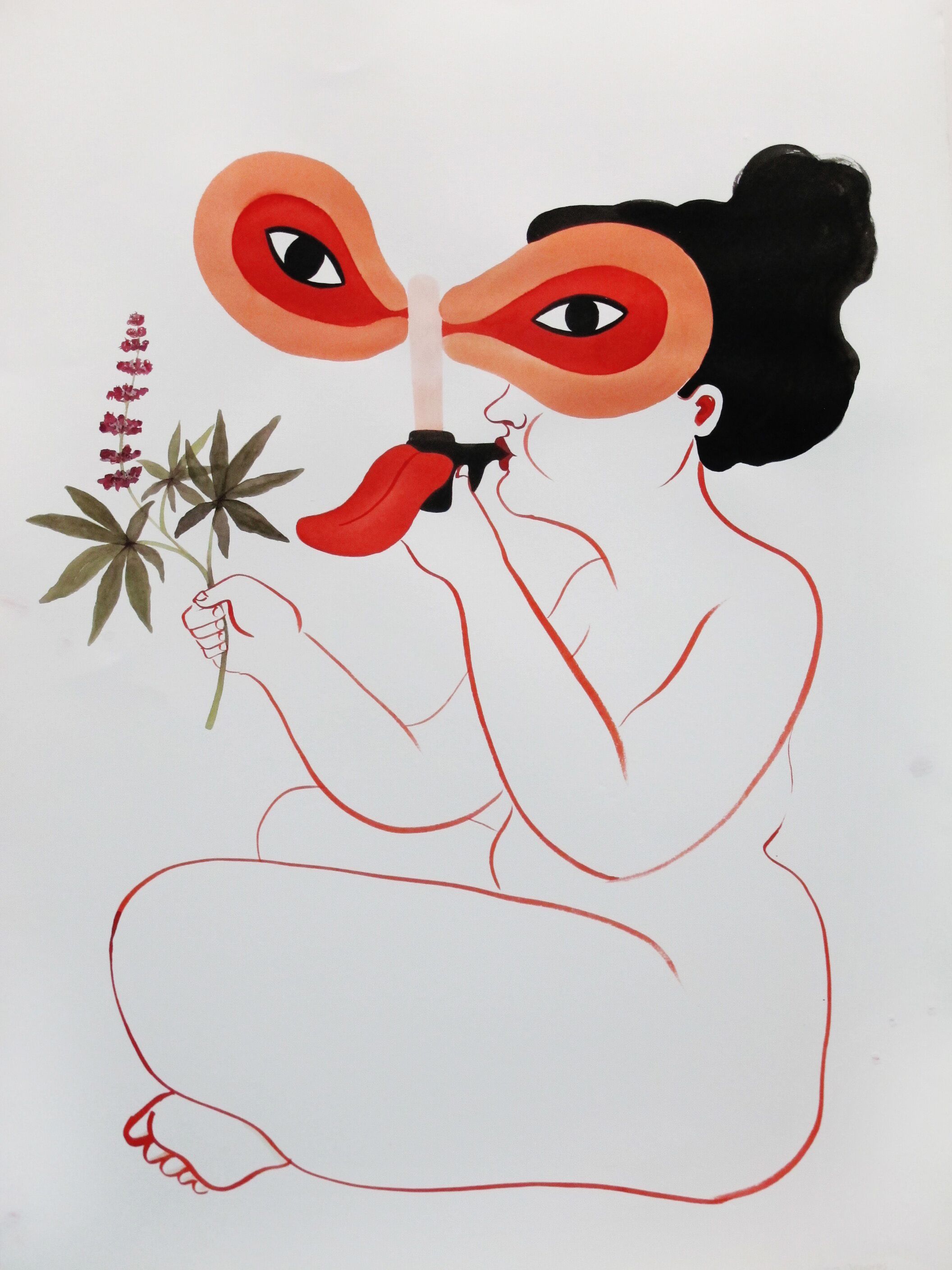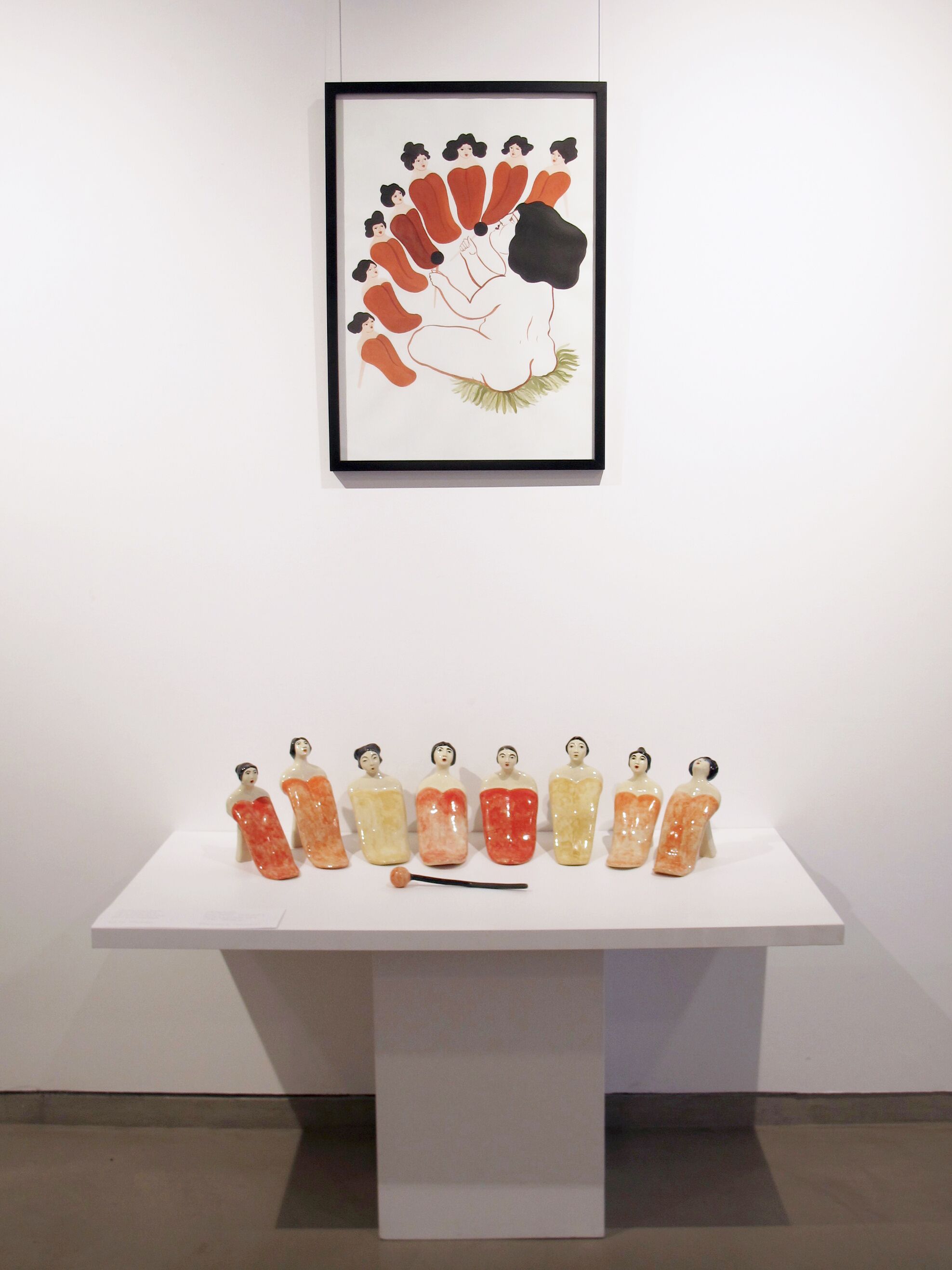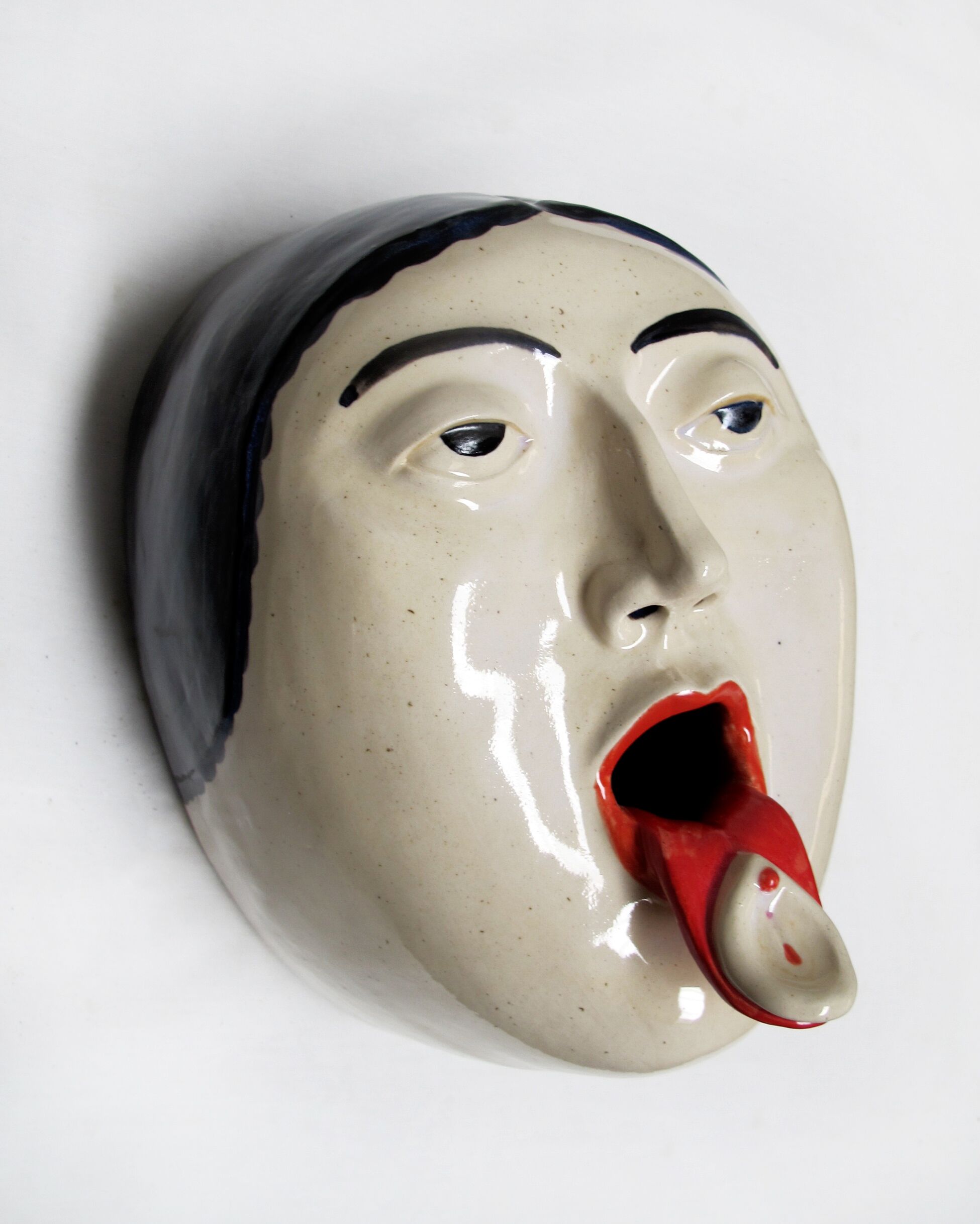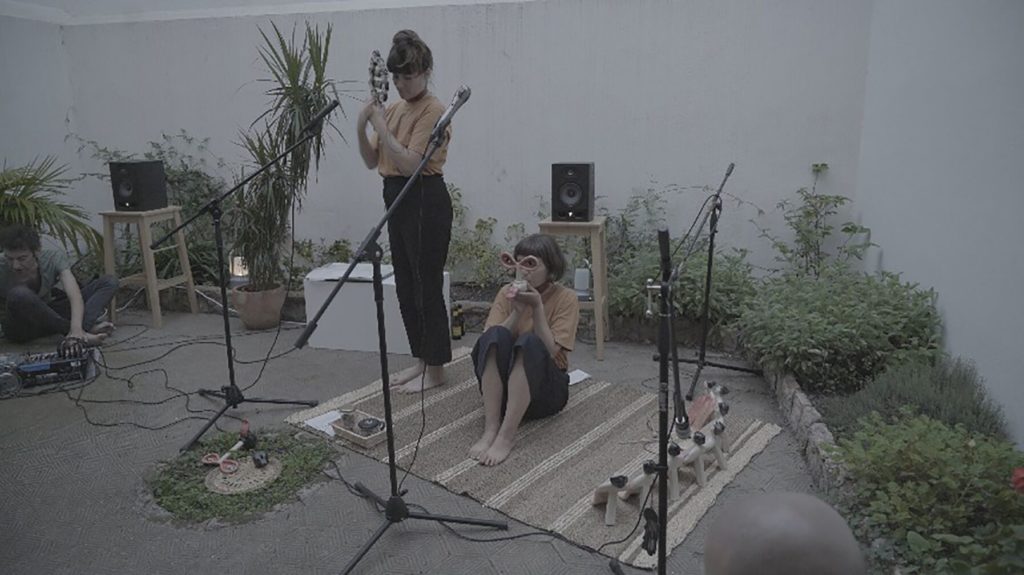Written and translated by Shaina Joy Machlus
The works of Barcelona-based Spanish artist Laia Arqueros’ are an invitation to a complete sensorial experience. They feature brightly colored and contrasting ceramic instruments and sculptures. To further tell the story, she has created simple and bold illustrations varied by sharply brush-stroked figures and ancient looking scrolls. She includes ritualistic musical performances that layer the sounds of her instruments, the visuals of her illustrations, and poetry.
Arqueros describes her latest body of work, “Ensayo para un ritual” (“Practice for a Ritual”) as such, “They cut out our tongues, they turned us into cows so that we could only ‘moo.’ They condemned us to repeat the voices of others. They silenced us. The myth that was once mythos is now understood as male, public discourse — the only accredited discourse. This action arises with the intention of reversing this concept, occupying space, vindicating history, rehearsing and improvising to invent new symbolic staging through the combination of the word, ceramic pieces, and the magic of electronic sound.”
The all-consuming quality of her work would make it easy to assume Arqueros seeks to create a world of her own. She isn’t about escapism. Just the opposite. Her artwork addresses political realities & the current state of the world head on. She told Tom Tom about how she demands to make her concerns heard and is using every tool in her power to do so.
 Tom Tom: Why do you choose to work in a variety of medias?
Tom Tom: Why do you choose to work in a variety of medias?
Laia Arqueros:It hasn’t been a conscious choice, my journey between different disciplines has a natural flow. I just remain faithful to my curiosity and interest in experimenting with new techniques and/or materials, combined with what feels relevant or concerning to me at the moment.
What are the challenges of this?
It’s always exciting to learn, you know? I believe that the life experience gained by learning new creative processes stimulates my artistic practice. I don’t find any negative aspects to this exploration; the challenge is to coexist happily with and take advantage of the trial and error.
What are the benefits of this?
Maybe I won’t have a deep command over all of my artistic languages but I prefer to speak and communicate in more languages. In other words, being a polyglot, because being versatile is, in my opinion, much more enriching.
What made you decide to start creating musical instruments?
The people that make up my closest circle–my partner and friends–are dedicated to music. It emerged naturally thanks to the conversations, the joint projects, the readings, the coexistence; in short, the feedback. It coincides with a moment in which one of my main concerns is to re-appropriate my voice and reclaim it. I was needing to occupy that space so I simply allowed myself to dive into it.
“Thinking about distant futures and the expectations that this generates, ends up working against me. And in general, I just hope not to fall into conformity.”
Can you spend a little time telling us about your process, how do you create a musical instrument?
So far, the construction of the instruments has been pure experimentation. I allowed myself to be guided by intuition and the sound possibilities of the material itself, ceramics. Investigating different thicknesses when modeling the clay, sizes, curvatures and the enameling itself (process of giving a crystallized patina) of the pieces. The visual and sound aspects come together to form a whole, on both an indivisibly conceptual and symbolic level. For example, when I conceived the Sistra, I wanted to create a reinterpretation of the ancient, sung Greek poetry like Sappho in Lesbos. The sound of the idiophone reminded me of the choral voices. In the case of my piece Xilófono de Corifeas (Xylophone of the Coryphaeus), I wanted to highlight the strength that a tongue can have, I wanted punches, that the percussion enhanced the strength that lies within this muscle.
 How do you see art intersecting with politics?
How do you see art intersecting with politics?
In my opinion, I don’t believe that art intersects with politics. I would say that they go hand in hand. Culture is a fundamental tool for the development and expression of critical thinking and political positioning, which is why I consider that every cultural manifestation is of vital importance to society. I think it is important that we fight for our ideas, vindicate and demonstrate inequalities or injustices, both individually and collectively. Each person doing so through their own medium or means of expression.
What do you hope your art expresses about politics?
I grew up in a very politicized and feminist family; with a militantly activist mother. This political positioning and/or way of understanding the world has always been present in my work. My art involves both reflections and contradictions, both individual and collective concerns. I am happy to think that other people may identify with the political intentionality of my pieces and that it motivates them to develop their own research and reflections.
How do you express these politics in your performances?
My leap into the world of performance art is very recent. With my collective La Forasteria we have performed a couple of times. Ensayo para un ritual (Practice for a Ritual) is the first time that I took my individual work into the sphere of physical movement coupled with sound and action. Whatever feminist issues currently concern me make up the driving force behind these actions. I consider the act of working with the body and the voice as political in itself, as every act is political. Along with the fantastic and vindictive poems that Mar Cianuro wrote for the performance and the different sound pieces composed by Larry Rodríguez with our voices, samples, and ceramic instruments. We performed a ritual in honor of Baubo, the deity that symbolizes erotic healing laughter, pleasure, enjoyment and female self-consciousness.
What changes have you observed in people also hearing your art instead of solely experiencing it visually?
The sum of the two-dimensionality of the graphic work, the three-dimensionality of the sculpture, the sound and body movement all together involves several of the senses at the same time. This can create the feeling that my work occupies more space, both physically and symbolically.
 What do you hope to see, hear, and experience in the future of musical and visual art and politics?
What do you hope to see, hear, and experience in the future of musical and visual art and politics?
Everyday should be Ladyfest! I organized Ladyfest in Barcelona in 2016– it’s a festival of music, arts and feminist culture. And it is also the perfect answer to the question of musical and visual arts and politics. As for my own artistic future, I work best by creating short-term goals. Thinking about distant futures and the expectations that this generates, ends up working against me. And in general, I just hope not to fall into conformity.
Who are some of your musical and visual artistic heroes?
Kiki Smith, Louise Bourgeois, Tracy Emins, Carol Rama, Romaine Brooks, Annette Messager, Julio Romero de Torres, Balthus, Federico Castellon, Felix Vallotton, Judy Chicago, Lusesita Delicatessen… Yma Sumac, Enrique Morente, Luz Casal, Gudrun Gut, Ursula Bogner, Sybille Baier, Kate Bush, Camarón, Violent Femmes, Moor Mother, Jenny Hval, White Noise, Tools you can trust, Marine Girls, Jaco, Caramuerto, MAGMADAM… to name a few.


